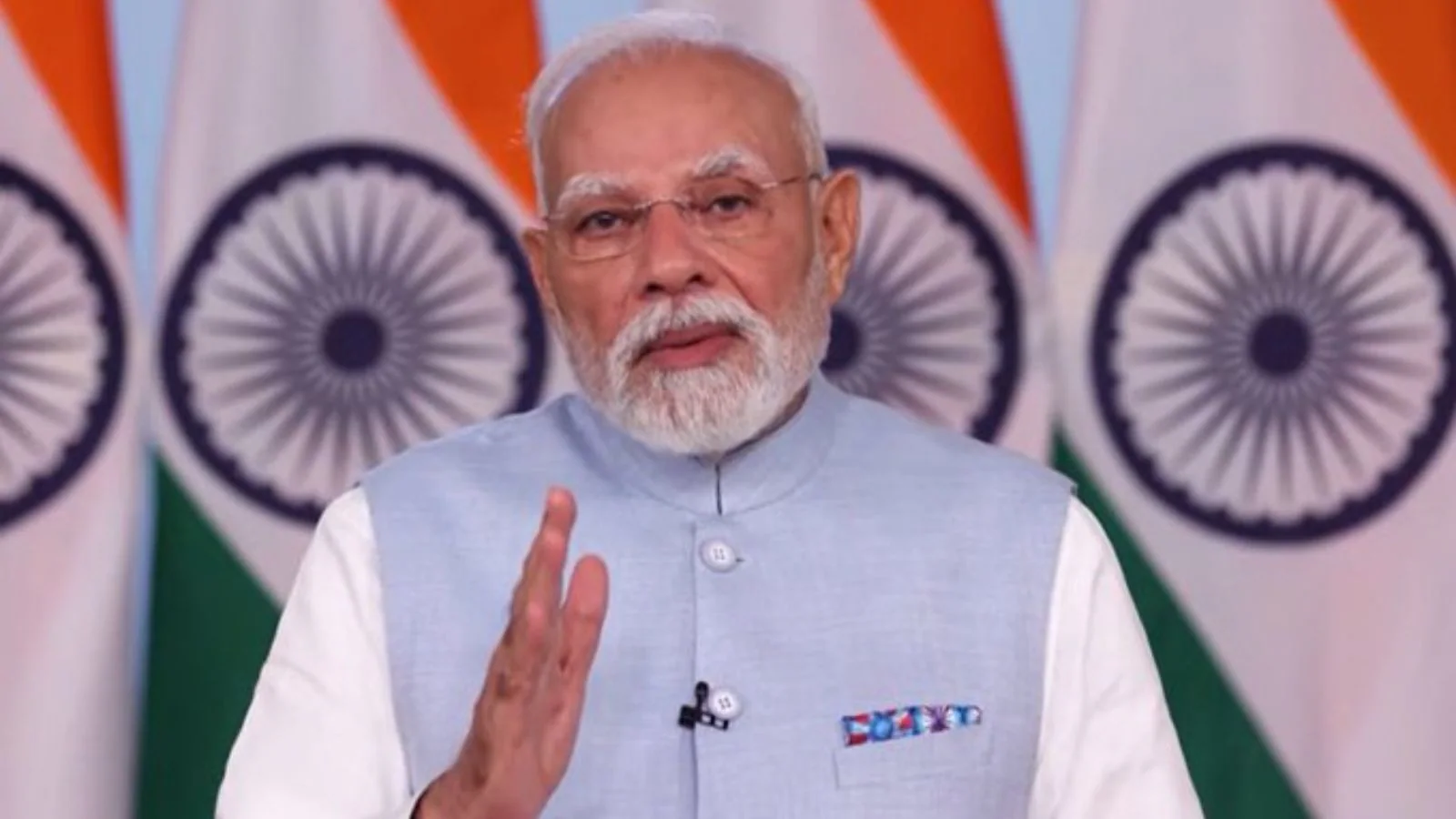Copyright news18

When Prime Minister Narendra Modi declared aboard INS Vikrant that India was “on the verge of eradicating Naxal-Maoist terror,” it was far more than a policy statement; it was a historic reckoning. His words carried the weight of six decades of blood, ideology, and governance failures that once split India’s heartland into two worlds: one governed by the Constitution, the other by the gun. The proclamation marked not merely a statistical victory but a civilisational milestone, the near conclusion of one of independent India’s longest internal wars. What began in 1967 in the small village of Naxalbari as a Maoist-inspired peasant revolt against landlords and state authority gradually metastasised into a full-fledged insurgency. For decades, it engulfed the tribal belts of central and eastern India across West Bengal, Bihar, Jharkhand, Chhattisgarh, Odisha, and parts of Maharashtra and Andhra Pradesh, forming what came to be known as the “Red Corridor.” At its zenith, it covered 223 districts and posed what former PM Manmohan Singh once termed India’s “gravest internal security threat.” Behind the insurgency lay deep fault lines: historical neglect of tribal regions, exploitation by forest contractors and moneylenders, and a state apparatus that was either absent or oppressive. The Naxalites exploited this vacuum, projecting themselves as the vanguard of the voiceless, but soon devolved into a ruthless network of extortion, coercion, and anti-development terror. For years, India oscillated between reactive policing and sporadic development schemes, never an integrated strategy. That changed decisively in 2015, when the Modi government adopted the National Policy and Action Plan to Address Left-Wing Extremism (LWE). Unlike its predecessors, this policy rejected piecemeal responses. It recognised that Naxalism was not merely a security problem, it was a governance deficit problem. The approach, therefore, combined coercive strength with constructive statecraft, blending counter-insurgency doctrines with development and democratic inclusion. It was, in essence, the operationalisation of what Modi often calls “Sabka Saath, Sabka Vikas, Sabka Vishwas.” The framework rested on five pillars, each addressing a dimension of the state’s historic failure. The first pillar was security capacity. The government modernised forces through intelligence-driven operations and specialised units such as the Greyhounds, COBRA battalions, and the Bastariya Battalion, composed of local youth familiar with the terrain. The focus shifted from defensive policing to proactive area domination, supported by advanced surveillance, drones, and real-time coordination through unified command structures. The second pillar was infrastructure and connectivity. The Road Connectivity Project for LWE Areas led to the construction of over 12,000 km of roads, bridges, and telecommunications networks. Each reclaimed village saw the establishment of fortified police stations and basic civic amenities. This was the literal “clear and hold” phase of the counterinsurgency doctrine, the permanent reinstatement of state presence. The third pillar was financial inclusion. Over a thousand new bank branches, hundreds of ATMs, and 40,000 banking correspondents entered previously unbanked regions. Jan Dhan Yojana accounts and direct benefit transfers bypassed the traditional middlemen and disrupted Maoist extortion networks. Economic inclusion replaced dependence on insurgent economies. The fourth pillar was human development. The government opened new Industrial Training Institutes, Skill Development Centres, and Eklavya Model Residential Schools, creating pathways for tribal youth who had previously seen no options beyond the gun. Schemes like Ayushman Bharat and PM Awas Yojana were extended deep into the forests, making welfare visible and tangible. The fifth pillar, perhaps the most transformative, was rights-based empowerment. Through the Forest Rights Act and Civic Action Programme, local communities were granted ownership of forest produce, land titles, and participation in local governance. This restored dignity, reduced alienation, and undercut the Maoists’ claim of fighting for justice. The cumulative outcome has been profound. Since 2010, incidents of Maoist violence have fallen by over 80%, and fatalities among civilians and security forces by 85%. The number of affected districts has shrunk from 126 in 2014 to just 11 in 2025. Once unapproachable bastions like Abujmarh, north Bastar, and parts of Jharkhand and Odisha now host panchayat elections and mobile connectivity. Over 8,000 cadres, including senior CPI (Maoist) commanders, have surrendered in the past decade, many joining the mainstream economy. This turnaround exemplifies what counterinsurgency scholars term the “clear, hold, and build” doctrine. First, security forces clear hostile zones. Second, administrative presence holds the reclaimed ground. Third, the government builds a self-sustaining ecosystem of welfare and development. Under Modi, this doctrine was not confined to theory it became a disciplined practice across states. It reflected political clarity and bureaucratic consistency, qualities often missing in previous regimes. An equally crucial aspect has been financial disruption. The National Investigation Agency (NIA) and Enforcement Directorate (ED) systematically targeted the Maoists’ funding streams. By invoking the Prevention of Money Laundering Act (PMLA), the agencies traced and seized funds amassed through illegal mining, extortion, and shell NGOs. This financial chokehold crippled Maoist logistics and propaganda arms. It was an ideological as well as operational strike demonstrating that revolutionary violence could not hide behind the veneer of activism. Federal coordination was another game-changer. The Ministry of Home Affairs created a unified command structure that replaced the fragmented efforts of the past. Interstate intelligence sharing, joint task forces, and synchronized funding through Security Related Expenditure (SRE) and Special Central Assistance (SCA) ensured seamless execution. This was the Centre-State partnership at its best, a template that could guide other internal security initiatives. Home Minister Amit Shah’s formulation, “Those who surrender will be embraced; those who persist with violence will be eliminated,” epitomised the balance between compassion and deterrence. This approach resonated with classical Indian statecraft from Chanakya to Sardar Patel, where legitimate coercion coexisted with reconciliation. As political theorist Francis Fukuyama might put it, the Indian state is evolving into a “high-capacity state,” assertive yet accountable. The metamorphosis of the “Red Corridor” into what PM Modi described as “Growth Corridors” is not a rhetorical flourish. It represents a tangible shift in the political economy. Markets have replaced militancy; schools and hospitals have replaced jungle courts. The once fear-ridden villages of Bastar now host Diwali fairs, weekly markets, and digital service centres. These scenes symbolise a moral victory as much as a material one, the triumph of democratic legitimacy over violent ideology. Peace, in turn, has generated an economic multiplier effect. Local entrepreneurship in forest produce, bamboo crafts, ecotourism, and small manufacturing has flourished. Women’s self-help groups, supported by Deen Dayal Antyodaya Yojana, have emerged as new agents of social transformation. The “conflict economy” of coercion and extraction is giving way to a “community economy” based on participation and productivity. Yet, as India nears its 2026 goal of fully eliminating Naxalism, vigilance must not wane. Rehabilitation of surrendered cadres, transparent enforcement of land and forest rights, and continuous investment in education and employment are vital to prevent relapse. Governance must not only be efficient but also empathetic. The lesson of Naxalbari was that alienation breeds extremism; the lesson of Bastar today is that inclusion extinguishes it. The story of India’s war against Maoism is, ultimately, a story of the state rediscovering its moral purpose. A decade ago, Naxalism was described as an incurable malaise, a symbol of India’s uneven modernity. Today, it is a fading scar. The victory did not come through brute force alone but through the patient restoration of governance and justice. Prime Minister Modi’s declaration aboard INS Vikrant thus captured more than a moment of triumph; it marked the transformation of a republic that has learned to fight not just to win territory, but to win back trust. The writer is a technocrat, political analyst, and author. He pens national, geopolitical, and social issues. His social media handle is @prosenjitnth. Views expressed in the above piece are personal and solely those of the author. They do not necessarily reflect News18’s views.



